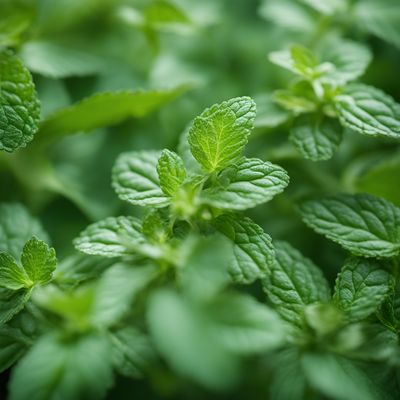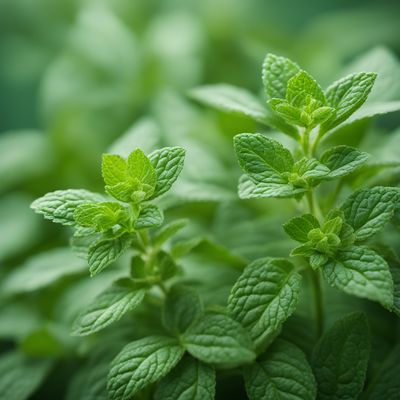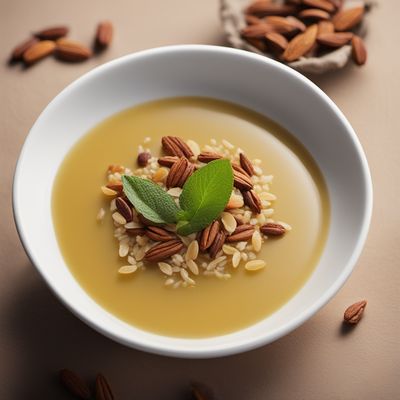
Ingredient
Corsican mint
"The Refreshing Delight: Discover the Aromatic Magic of Corsican Mint"
Corsican mint is a perennial herb that grows in dense mats, reaching a height of only a few centimeters. It has small, round leaves that are bright green in color and emit a strong minty aroma when crushed. The leaves are delicate and have a slightly fuzzy texture. Corsican mint is known for its intense flavor, which is reminiscent of spearmint but with a sweeter and more delicate profile. Its taste is refreshing and cooling, making it a popular choice for flavoring desserts, teas, cocktails, and savory dishes.
Origins and history
Corsican mint is native to Corsica, a Mediterranean island known for its rich biodiversity. It was first discovered and named by the French botanist Louis Requien in the 19th century. Corsican mint has been used in traditional Corsican cuisine for centuries, where it is often incorporated into local dishes and herbal remedies. Today, it is cultivated in various parts of the world for its culinary and aromatic qualities.
Nutritional information
Corsican mint is low in calories and does not provide significant amounts of nutrients. However, it contains small amounts of vitamins A and C, as well as trace minerals like iron and calcium.
Allergens
Corsican mint is generally considered safe and does not commonly cause allergies. However, individuals with a known allergy to mint or other members of the Lamiaceae family should exercise caution.
How to select
When selecting Corsican mint, look for fresh, vibrant leaves that are free from wilting or discoloration. The leaves should have a strong minty aroma when gently crushed. If purchasing from a farmers market, choose plants that have been well cared for and are free from pests or diseases.
Storage recommendations
To maintain the freshness and quality of Corsican mint, store it in a plastic bag or airtight container in the refrigerator. Alternatively, you can place the stems in a glass of water, covering the leaves with a plastic bag, and store it in the refrigerator. It is best used within a few days of harvesting or purchasing for optimal flavor.
How to produce
Corsican mint can be easily grown in containers or in the ground. It prefers a moist, well-draining soil and partial shade. It can be propagated from seeds or cuttings and requires regular watering to keep the soil consistently moist. It is a low-maintenance herb that can be grown by amateur gardeners.
Preparation tips
Corsican mint is versatile and can be used in various culinary applications. It can be used as a garnish for desserts, salads, and cocktails, or infused into teas and syrups. It can also be chopped and added to sauces, marinades, and dressings to add a refreshing twist. To release its flavor, gently crush the leaves before using. Remember that a little goes a long way, as Corsican mint has a potent flavor.
Substitutions
If Corsican mint is not available, spearmint or peppermint can be used as suitable substitutes. However, keep in mind that the flavor profile may differ slightly.
Culinary uses
Corsican mint is commonly used as a garnish for desserts, such as fruit salads, ice creams, and chocolate dishes. It is also popular in herbal teas, cocktails, and infused waters. In savory dishes, it can be used to flavor sauces, dressings, and marinades. Its refreshing flavor pairs well with ingredients like lemon, berries, cucumber, and yogurt.
Availability
Corsican mint is commonly available in regions with a Mediterranean climate, including Corsica, France, Italy, and other parts of Europe. It can also be found in some specialty herb stores or online.
More ingredients from this category

Bergamot mint
The Citrus Twist

Other species and hybrids of genus Mentha, not elsewhere mentioned
The Aromatic Herb Family

Peppermint
The Refreshing Herb: Peppermint

Gingermint
The Perfect Blend of Zesty Ginger and Refreshing Mint

Water mint
"Refreshing Twist: Exploring the Delights of Water Mint"

Apple mint
Refreshing Minty Twist

Spearmint
"The Refreshing Herb: Unveiling the Delights of Spearmint"

Pennyroyal
The Versatile Herb: Pennyroyal
